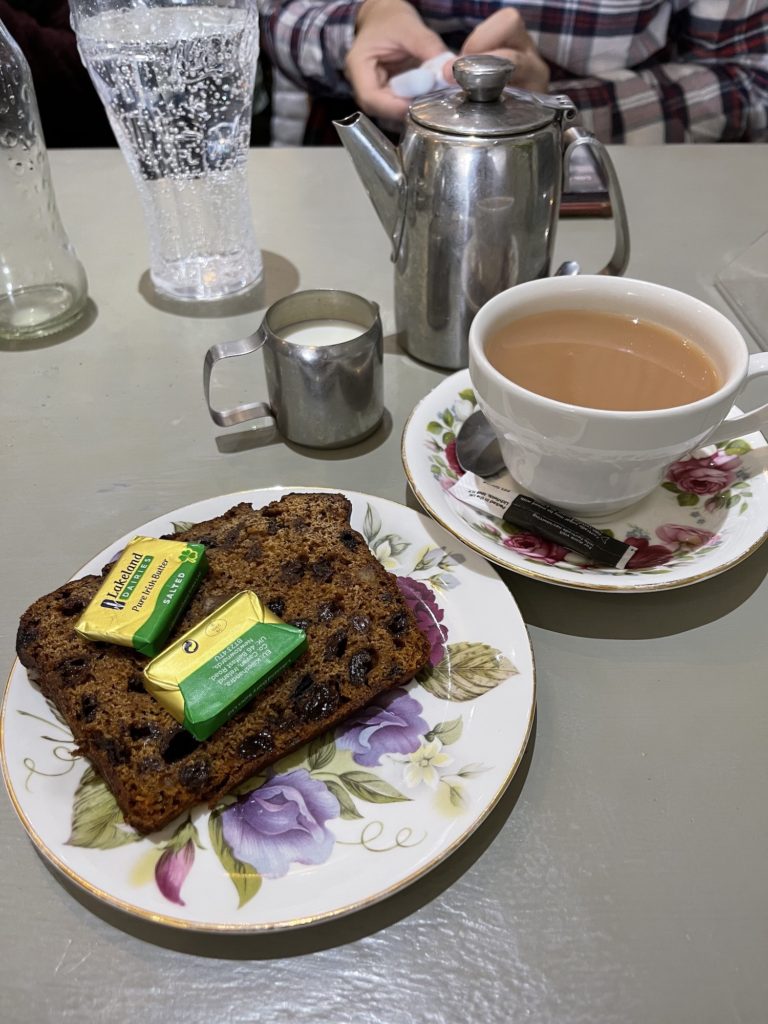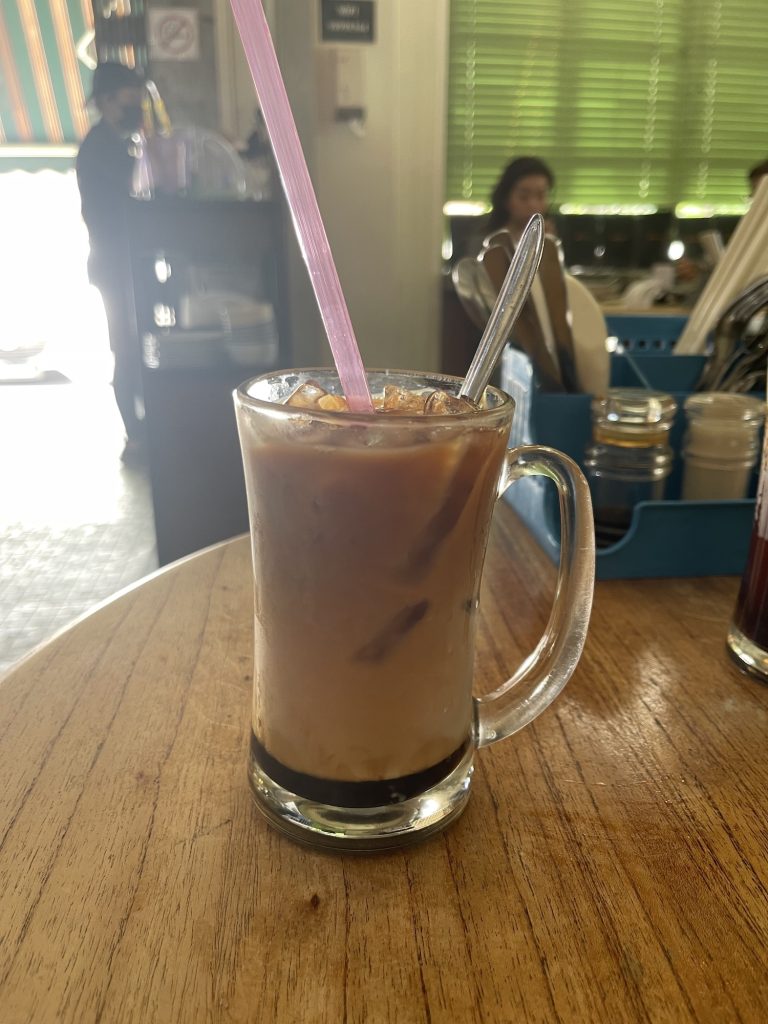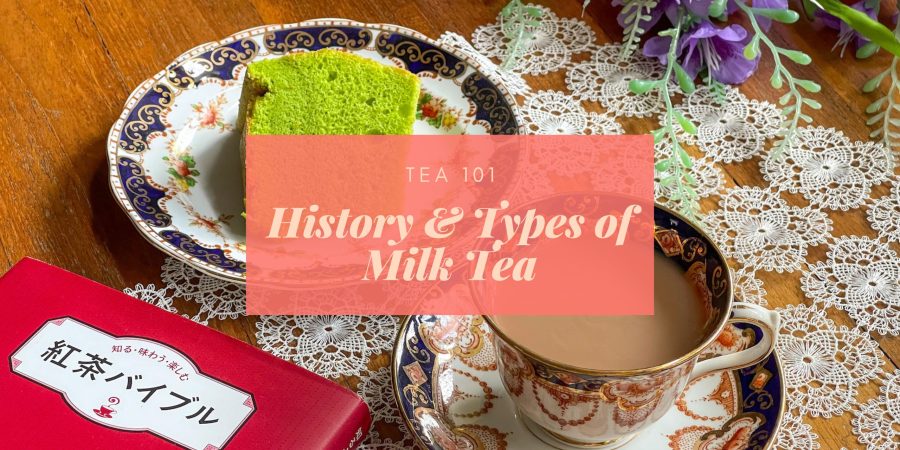I was talking to my cousin about the difference between milk tea and royal milk tea when I realised that I’ve not written a post on this topic! I thought this would be fairly easy to write, given that I own a book called “Black tea bible” but as it turns out, milk tea isn’t extensively covered in the book. So instead of a definitive post, this is really an introductory post to milk tea based on what I know.
History of Milk Tea
To find the origins of milk tea, I turned back to the oft-referenced The Tale of Tea by George van Driem. Here, van Driem attributes to the discovery of milk tea to Marguerite Hessein, dame de la Sabliere, as attested to in a letter dated 16th Feb 1680 by the Marquise de Sevigne. In fact, it seems that the practice of drinking milk tea first caught on with a segment of the French aristocracy before the English even become avid tea drinkers! So perhaps all the people who label their milk tea “thé au lait” are onto something.

The English, by the way, were probably the third group of people in Europe to be introduced to the concept of milk tea. Apparently, the Dutch were also aware of this practice, but it never caught on. As such, the English learnt about the concept of milk tea from the French, among whom it would have been a fashionable practice.
Sidenote: Who created ‘Royal Milk Tea’?
Incidentally, because I assumed that royal milk tea was Japanese, I decided to look into that a bit more. The origins of royal milk tea are a little unclear, but from what I can find, the name “royal milk tea” was created by Lipton Tea in Kyoto (as Wikipedia and a few other websites mention), and the preparation of royal milk tea was created by the Osaka-based London Tea Room. However, London Tea Room’s own post mentions that they came up with the name “royal milk tea” because milk tea = England = royal for them.
Sidenote 2: The Disputed History of Teh Tarik
As a Singaporean, it would be impossible for me to write a post on milk tea and not mention that Teh Tarik, one of the types of milk tea mentioned below, is disputed (like so many other foods local to the region). Because Singapore and Malaysia used to be one country (and one colony under the British), there’s a lot of arguments over the origin of many dishes.
What is not disputed, however, is who created teh tarik. It’s widely accepted that Teh Tarik was invited by Indian-Muslim immigrants to the Malayan penisula (according to Britanica, the Malay Penisular comprises of the far southeastern portion of Myanmar, the southwestern section of Thailand, Peninsular/West Malaysia, and Singapore). These Indian-Muslim immigrants set up drinks stores, or sarabat, and there came up with the drink.
Types of Milk Tea

Given that milk tea literally means tea with milk, it may be surprising to know that there are a few types of milk tea available, namely:
- Milk tea: the traditional preparation is to add milk to black tea (or tea to milk, this is apparently pretty contested)
- Royal milk tea: this milk tea is prepared by directly infusing the tea leaves in hot milk over the stove
- Masala Chai: Chai means “tea” in Hindi, and Masala Chai means “spiced tea”. This traditional Indian tea is prepared with milk and other spices. According to Wikipedia, the traditional milk used is water buffalo milk.
- Hong Kong milk tea: As far as I can tell, Hong Kong milk tea is a blend of black tea and sometimes puer (with many shops having its own blend), with evaporated milk added to it. Customers can add as much sugar as they like after the tea has been served. One major distinguishing feature of Hong Kong milk tea is that it’s strained through ha “stocking”, which is supposed to make the tea very smooth.
- Teh C: A style of tea commonly found in Singapore and Malaysia, Teh C involves evaporated milk and sugar added to a very thick black tea. If you prefer to have your tea unsweetened, ask for “Teh C Kosong”. The letter “C” here is supposed to stand for “Carnation”, a popular brand of evaporated milk.
- Teh Tarik: Another tea popular in Singapore and Malaysia, Teh Tarik is made with condensed milk and “pulled” (tarik means “pull” in Malay) by passing it back and forth between two vessels. This helps to mix the tea with the condense milk, cool it down and give it a frothy top.
- Thai Tea: This tea is prepared with either Ceylon tea or a native/semi-wild Assam tea known as ‘Bai Miang’. It’s sweetened with sugar and condensed milk. Coconut milk and evaporated milk is also sometimes used in preparing this tea.
As you can see, there are many different types of milk tea – I probably haven’t managed to find them all! There’s also much more to the history of milk tea, but I’ve not managed to cover all of them. Still, I hope the little I have managed to uncover is interesting/new to you!
References
If you’re interested in reading more, these are the sources I used for this post:
The Tale of Tea by George van Driem (My Review)
Post on Royal Milk Tea by London Tea Room (In Japanese)
Blogpost post on the history of Royal Milk Tea (In Japanese)
Wikipedia page for Masala Chai
Infopedia article on the history of Teh Tarik
Britannica entry on the Malay Penisula
Thanks for reading! If you enjoyed this post, please consider tipping me a cup of tea.

I haven’t tasted other milk tea but I’m very good with Masala Chai
I need to drink more Masala Chai! It’s sooo good (but it was also hard to find a good cup in France :p)
Yeah and here in India, People makes it in different way. Not all styles are same but I like mine with more ginger and strong. I can’t start my day without it.
wow I had never heard the term Royal Milk Tea before!
Ooooh, it’s pretty common here but we are closer to Japan! And I saw it all the time in Japan haha, I really prefer it tbh!
[…] Tea 101: History of & Types of Milk Tea – Eustea Reads: This blog post provides a comprehensive overview of the history of milk tea and its different types. It explores the origins of royal milk tea and discusses its cultural significance. […]